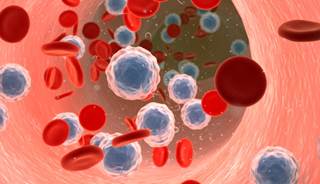Leave a Comment:
2 comments
[…] Feverfew as Multiple Myeloma Therapy […]
Reply[…] Feverfew as Multiple Myeloma Therapy […]
Reply
Multiple Myeloma an incurable disease, but I have spent the last 25 years in remission using a blend of conventional oncology and evidence-based nutrition, supplementation, and lifestyle therapies from peer-reviewed studies that your oncologist probably hasn't told you about.
Click the orange button to the right to learn more about what you can start doing today.

Parthenolide aka Feverfew is the trifecta as a multiple myeloma therapy. It is cytotoxic to MM, it is cytogenic to drug-resistant MM and feverfew enhances the efficacy of dexamethasone.
After I endured several difficult years of conventional MM therapies from my diagnosis in ’94 until my oncologist told me she could do nothing more for me in 9/97 I became angry at the world of conventional MM oncology vowing to turn newly diagnosed MMers from the horrors of conventional MM treatments.
That was then, this is now. MM is an aggressive and difficult to treat blood cancer. The newly diagnosed MMer will need every possible evidence-based therapy he or she can find.
The studies linked below indicate that feverfew is one of those evidence-based but non-conventional MM therapies that can kill MM on its own but can also enhance the efficacy of a conventional chemo like dexamethasone.
I am both a long-term MM survivor and MM cancer coach. Living with MM since my diagnosis in early ’94 has taught me three things.
First, MMers always relapse. Conventional oncology cannot cure multiple myeloma.
Second, while I relapsed three times while undergoing conventional therapies I achieved complete remission (CR) while undergoing evidence-based non-conventional therapy called antineoplaston.
And forth, the key to maximizing your life is to combine the best of both conventional and evidence-based non-conventional multiple myeloma therapy.
My point is that MMers must learn about non-conventional therapies to manage their MM for the long-term.
Thanks,
David Emerson
“Parthenolide is a sesquiterpene lactone of the germacranolide class which occurs naturally in the plant feverfew (Tanacetum parthenium), after which it is named. It is found in highest concentration in the flowers and fruit…”
“Parthenolide inhibited the growth of MM cells lines, including drug-resistant cell lines, and primary cells in a dose-dependent manner…
An additive effect and synergy were observed when parthenolide was combined with dexamethasone and TNF-related apoptosis-inducing ligand, respectively.
[…] Feverfew as Multiple Myeloma Therapy […]
Reply[…] Feverfew as Multiple Myeloma Therapy […]
Reply